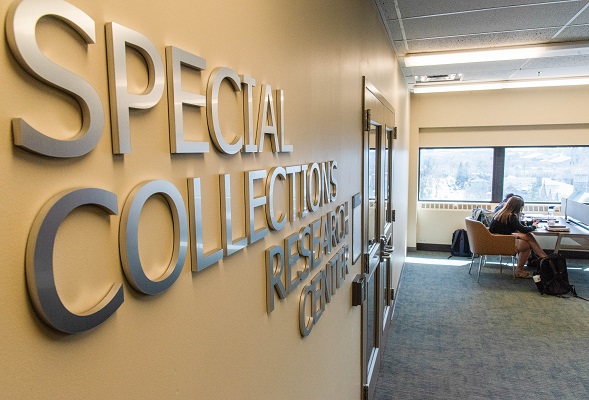Edward C. Weber Papers, 1949-2006
28.0 Linear Feet
The Edward C. Weber Papers consists of Weber's correspondence with organizations, publishers, researchers, associates, family, and friends, along with biographical materials created for his retirement and memorial services. The collection provides a snapshot of the Joseph A. Labadie Collection and his work there for a 40 year period (1960-2000), as well as a portrait of his personal relationships with friends and family from 1949 to 2005.
The Biographical Materials series contains materials from Weber's retirement celebration and memorial service. The first folder contains past articles and correspondence on paper stock, reprinted for Weber's memorial service in 2006. The second set of items relate to Weber's retirement in 2000. This includes a flyer for his retirement celebration, articles about his retirement, and copied certificates of commendation. In addition, two framed items of commendation are housed in an oversized box.
The Correspondence series makes up the majority of the collection and is comprised of 27 linear feet of paper material housed in 54 manuscript boxes, foldered alphabetically by correspondent or corresponding organization. Individual letters, cards, photographs and other types of written communication are arranged chronologically within each subject's folder(s). The majority of folders are dedicated to outreach by Weber to various radical groups and individuals soliciting material donations to contribute to the Labadie Collection. His written responses to reference inquiries for items within the Labadie Collection make up another significant segment of the series. Most of these materials are typewritten letters officially sent on behalf of the Labadie Collection and University of Michigan Special Collections. Some later letters were written by Labadie Collection assistants during Weber's time there and with his knowledge. Since Weber never used email, his letters sent on behalf of the Labadie Collection were typed on a manual or electric typewriter. There are occasional handwritten notations on some of these letters and a few emails printed out so he could read them. Other folders in the series contain personal correspondence from friends, family, and other associates. These items are made up mostly of handwritten notes, postcards, greeting cards, newspaper clippings, printouts of emails, occasional photographs, and other miscellaneous items. Many of the folders were removed from the general Labadie correspondence files in 2008 and a listing was made of them at that time. The rest of the series is made up of personal correspondence Weber stored in his home.
Within the series are several notable, lengthy correspondence partners including Theodore Adams (1950-2004, 21 folders), James Q. Belden (1952-2000, 11 folders), George Nick (1949-1991, 12 folders), Curtis and Clarice Rodgers (1961-2005, 18 folders), and Henry Van Dyke (1950-2004, 12 folders). The series also includes correspondence from notable individuals such as civil rights activist Malcolm X, graphic novelist Harvey Pekar, former Secretary of State Eliot Abrams, the White Panther Party, among many others.
Abbreviations:
LC=Labadie Collection ECW=Edward C. Weber
